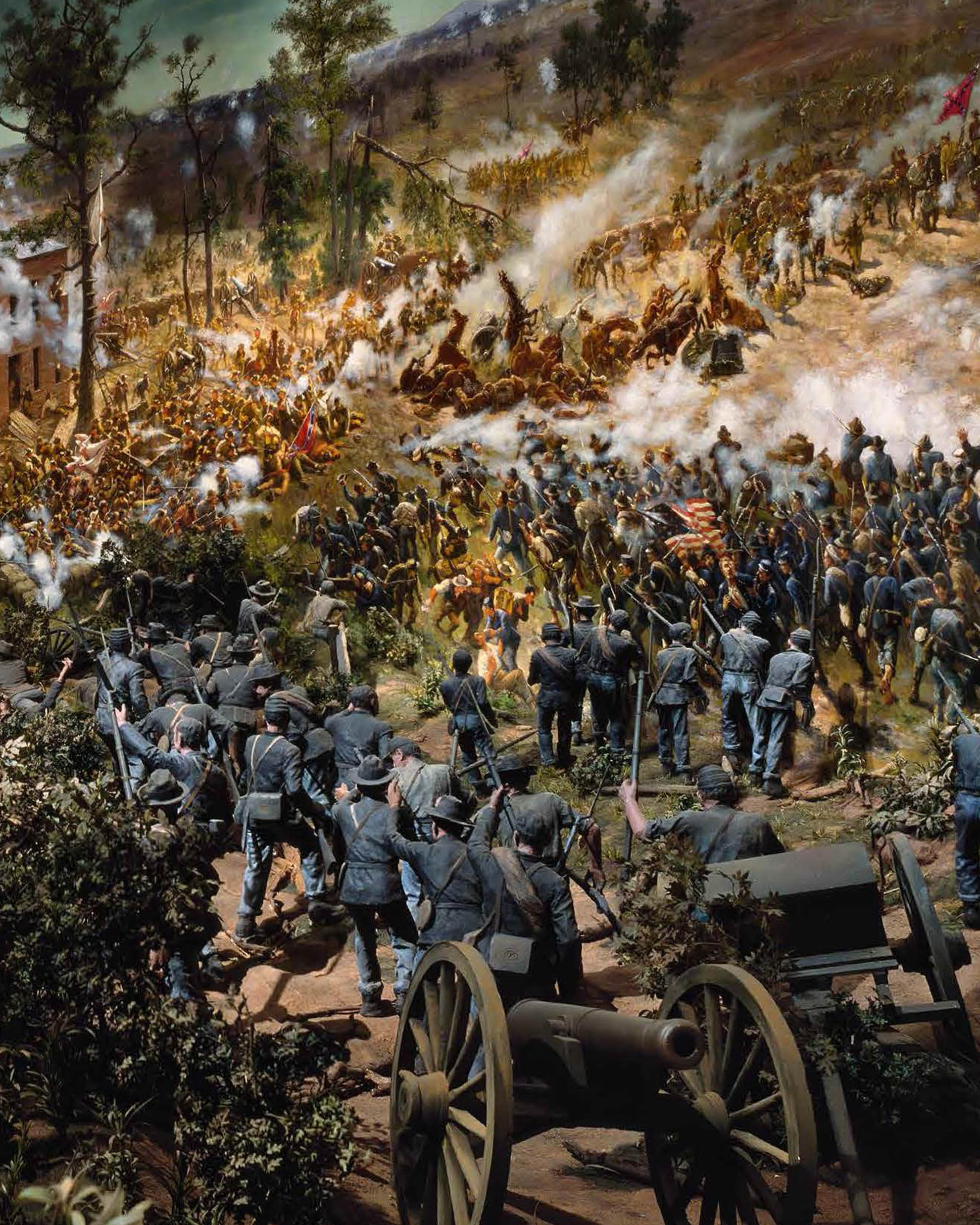
His Terrible Swift Brush
A DREAM REMEMBERED
Amy DurrellFour score and seven years ago, Louis B. Mayer did highly resolve to rescue a languishing film project: his son-in-law’s rights deal on Gone with the Wind. Mayer provided a king’s ransom in funding and the loan of top star Clark Gable, and within the year filming was underway on a backlot stage set of 1864 Atlanta. The blockbuster 1939 film presented southern white Americans with the traumas of that war and their past, though in candy-color Hollywood Technicolor. But this wasn’t the first time a large-screen production of Civil War history had captivated gaping audiences. The Atlanta Cyclorama started dazzling viewers in 1886. Whichever spectacle we consider, wraparound Cyclorama (a 400-foot painted curtain extending 360 degrees in circumference and looming 40 feet high) or big-screen Technicolor on a silver screen, the astounding reality at the center of that vision can be summarized with Lincoln’s masterful brevity: “And the war came.” In the summer of 1864 the war came to Atlanta. Two decades later, Americans and, eventually, Atlantans flocked to see what must have lingered in their psyches like a terrible dream, but now one they could finally see with their own eyes: bright paint on a huge canvas.






